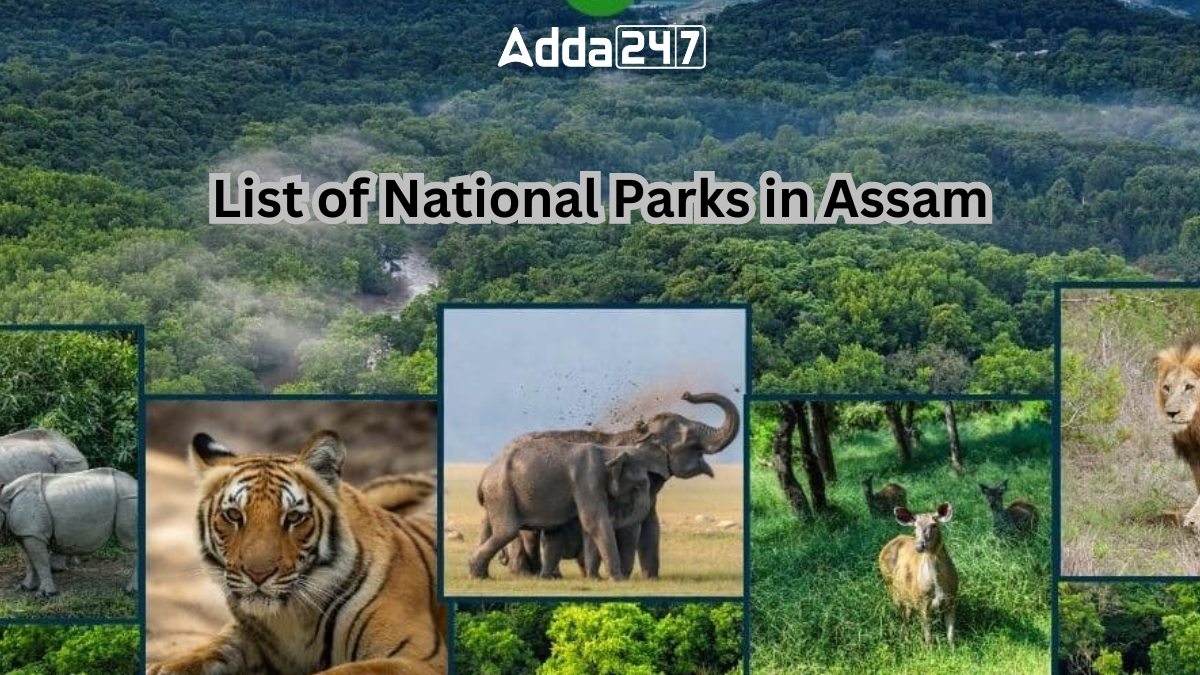Nestled in the northeastern part of India, the state of Assam is renowned for its breathtaking natural beauty and rich biodiversity. One of the prime attractions for nature enthusiasts and wildlife lovers alike is its collection of national parks. These protected areas not only showcase the diverse flora and fauna of the region but also offer visitors a chance to immerse themselves in the untamed beauty of Assam. Let’s embark on a journey through the notable national parks in Assam.
How many National Parks are there in Assam?
Assam is home to six mesmerizing national parks. Kaziranga National Park, famous for its one-horned rhinoceros population, is a UNESCO World Heritage Site. Manas National Park, a UNESCO Biosphere Reserve, boasts diverse wildlife. Other notable parks include Nameri National Park, Dibru-Saikhowa National Park, and Orang National Park, each offering unique ecosystems and wildlife experiences.
Largest National Park in Assam
Kaziranga National Park stands as the largest national park in Assam, India’s northeastern region. Encompassing a sprawling 42,996 hectares, it represents a significant portion of the unaltered wilderness within the Brahmaputra Valley floodplain, making it the foremost haven for diverse wildlife in the state.
List of National Parks in Assam
Assam is home to six mesmerizing national parks. Kaziranga National Park, famous for its one-horned rhinoceros population, is a UNESCO World Heritage Site.
Here is the list of national parks in Assam:
| National Parks in Assam | |||
| S. No. | National Parks | Location | Establishment |
| 1. | Kaziranga National Park | Golaghat and Nagaon districts | 1908 |
| 2. | Manas National Park | Assam-Bhutan border | 1973 |
| 3. | Rajiv Gandhi Orang National Park | Sonitpur district | 1985 |
| 4. | Raimona National Park | Western Assam | 2021 |
| 5. | Nameri National Park | Sonitpur district | 1978 |
| 6. | Dehing Patkai National Park | Dibrugarh and Tinsukia | 2004 |
Karziranga National Park
Location: Golaghat and Nagaon districts
Establishment: 1908
Area: 1,090 square kilometers
Kaziranga National Park, located in Assam, India, is renowned for hosting the majority of the world’s Indian rhinoceros population. Designated as a UNESCO World Heritage Site, it also serves as a Tiger Reserve and boasts significant populations of elephants, wild water buffalo, and swamp deer. The park’s conservation efforts have garnered attention, though it faced criticism after a BBC documentary highlighted controversial conservation strategies.
Manas National Park
Location: Assam Bhutan border
Establishment: 1973
Area: 500 square kilometers
Manas National Park, nestled in the Himalayan foothills of Assam, India, is renowned as a UNESCO World Heritage Site and biosphere reserve. Serving as a Project Tiger reserve and elephant reserve, it boasts rare and endangered species like the Assam roofed turtle, golden langur, and pygmy hog. Its stunning biodiversity, landscapes, and wildlife, including the wild water buffalo, attract visitors worldwide.
Rajiv Gandhi Orang National Park
Location: Sonitpur
Establishment: 1985
Area: 78.81 square kilometers
Orang National Park, situated along the northern bank of the Brahmaputra River in Assam, India, spans 79.28 square kilometers. Established as a sanctuary in 1985 and upgraded to a national park in 1999, it is a vital habitat for diverse wildlife, including the great Indian rhinoceros, pygmy hog, Asian elephant, wild water buffalo, and Bengal tiger. Notably, it serves as a crucial refuge for rhinoceros conservation in the region.
Raimona National Park
Location: Western Assam
Establishment: 2021
Area: 422 square kilometers
Raimona National Park, situated in the western reaches of Assam, India, spans Gossaigaon and Kokrajhar subdivisions of Kokrajhar district within the Bodoland Territorial Region. Established on 5 June 2021, it covers an area of 422 square kilometers and forms a vital part of the contiguous forest patch, including the Ripu Reserve Forest. This park holds significant importance for conserving Asian elephants, Indian bison (gaurs), and golden langurs, contributing to the Chirang-Ripu Elephant Reserve.
Nameri National Park
Location: Sonitpur
Establishment: 1978
Area: 200 square kilometers
Nameri National Park, nestled in the foothills of the eastern Himalayas in Assam, India, lies approximately 35 km from Tezpur. It shares its northern border with Arunachal Pradesh’s Pakhui Wildlife Sanctuary, forming a combined area exceeding 1,000 square kilometers. Declared a Tiger Reserve in 1999-2000, it comprises two core areas: Nameri National Park and Sonai-Rupai Wildlife Sanctuary, with the Jia-Bhoroli River as its vital artery.
Dehing Patkai National Park
Location: Dibrugarh and Tinsukia
Establishment: 2004
Area: 231.65 square kilometers
Dehing Patkai National Park, spanning Dibrugarh and Tinsukia districts in Assam, covers 231.65 square kilometers of lush rainforest. Originally declared a wildlife sanctuary in 2004, it gained national park status in December 2020 and was officially notified as such by the Assam Forest Department in June 2021. Situated within the Dehing Patkai Landscape, it harbors India’s largest expanse of lowland rainforests and was designated as a vital Elephant Reserve under Project Elephant.




 Which Fish is known as the King of India...
Which Fish is known as the King of India...
 What was the Old Name of China? Know the...
What was the Old Name of China? Know the...
 What is the Capital of Senegal? Know Abo...
What is the Capital of Senegal? Know Abo...







